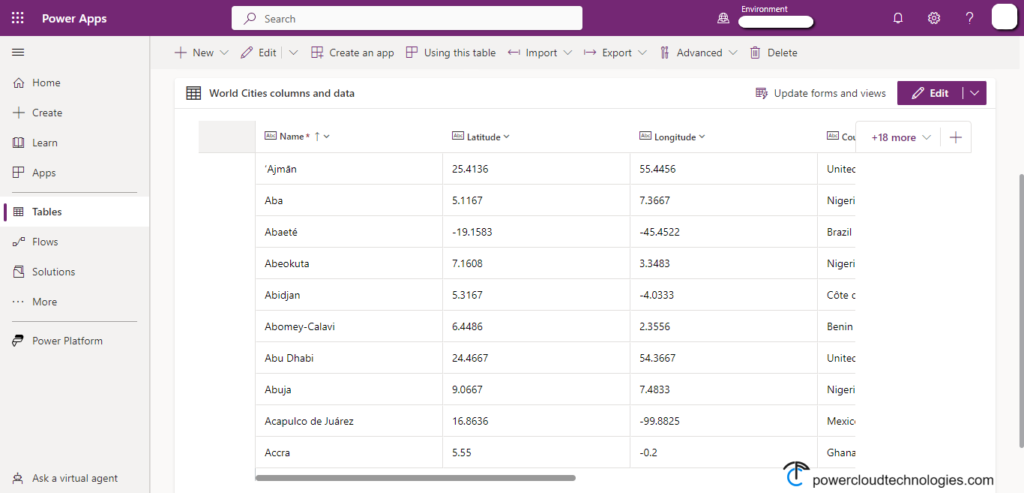You will be having a hard time if you are not using Dataflows to load data into Microsoft Dataverse. Dataflows can be used to load data into Dataverse from multiple data sources like SharePoint, Excel, Power BI workspaces, Azure Data Lake storage, etc.
Dataflows load data much faster than uploading data from Power Automate to the Dataverse table.
We have a SharePoint list with more than 1000 records. Let’s see how we can load data from the SharePoint list to the Dataverse table.
1. Create a Dataverse table
Open the PowerApps studio.
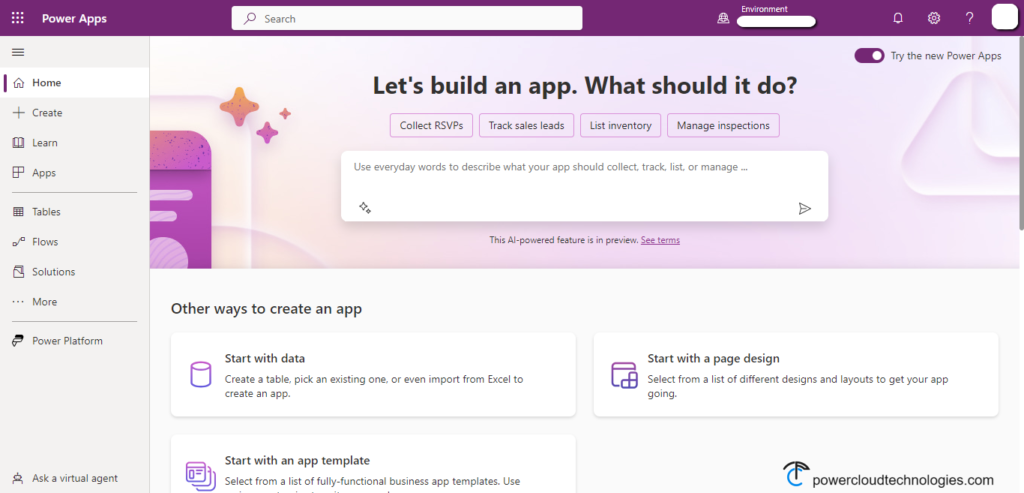
Create a Dataverse table.
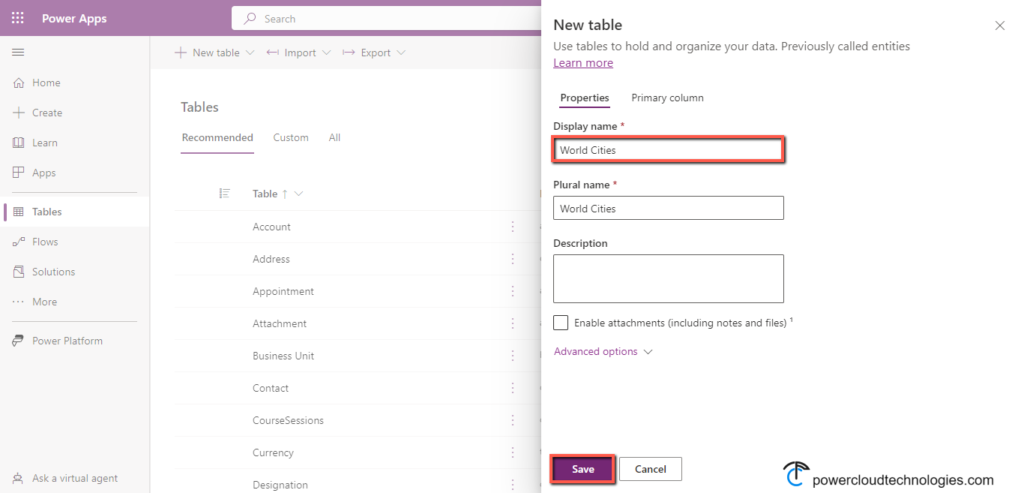
Let’s create the Dataflow.
2. Create the Dataflow
Open the PowerApps studio, click on the “More” tab, and click on the “Dataflows”.
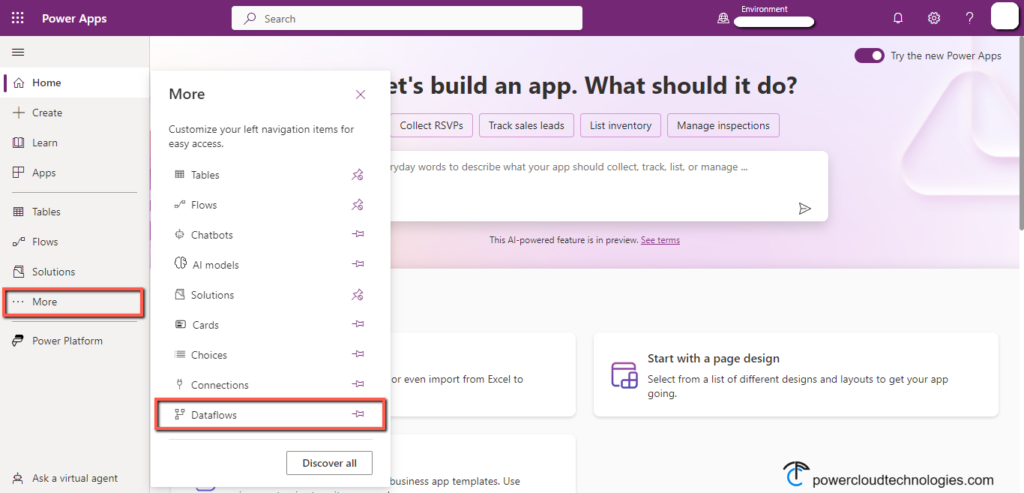
Click on the “New Dataflow” button.
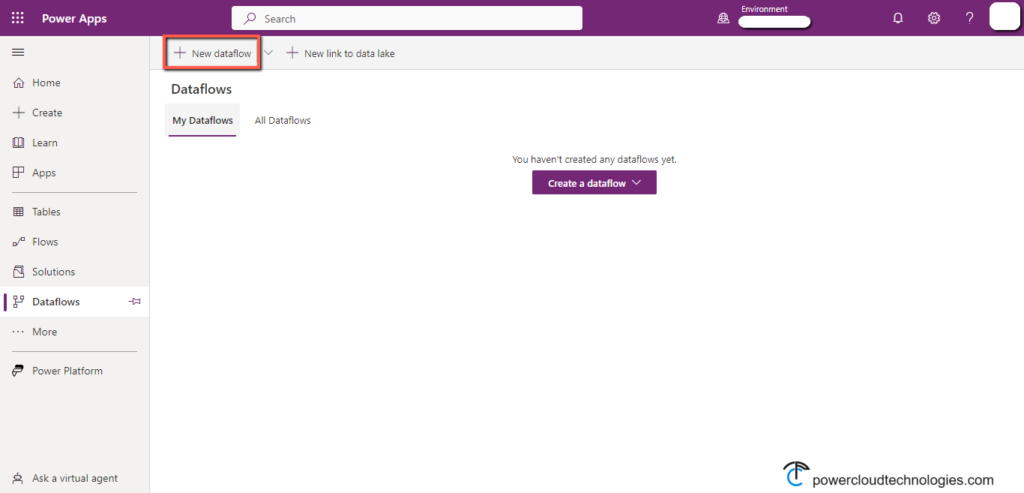
Write the “Name” and click on the “Create” button.
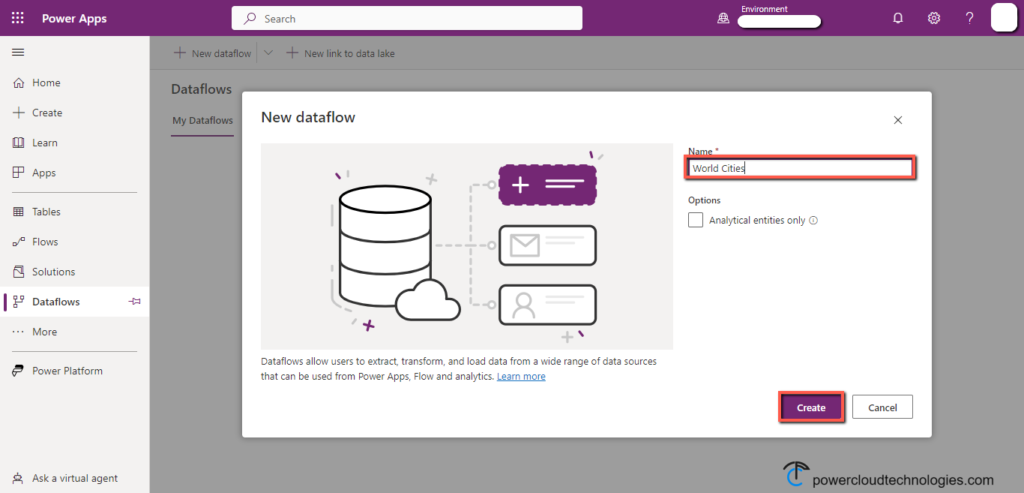
Select the “SharePoint Online list”.
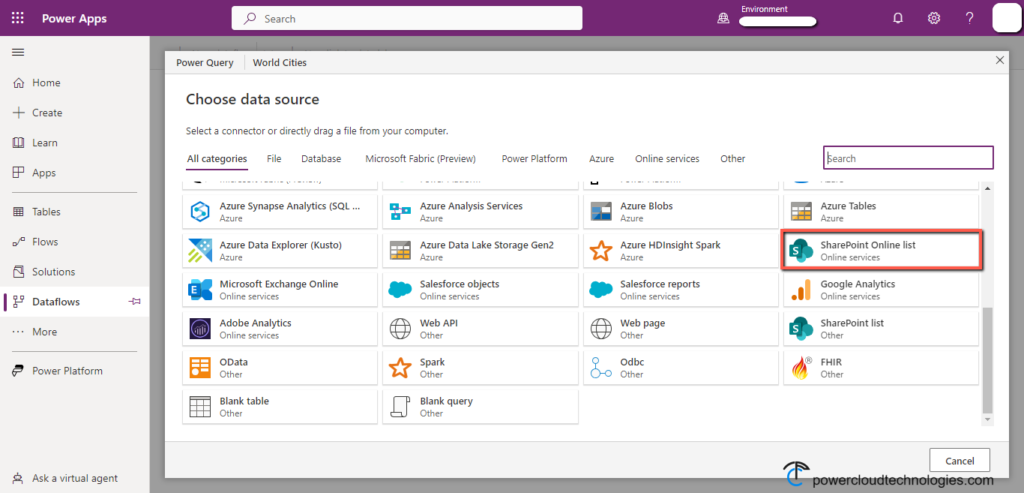
Paste the “URL” of the “SharePoint Online Site”, select the “Authentication kind” as “Organizational account” and “Sign in” if required.
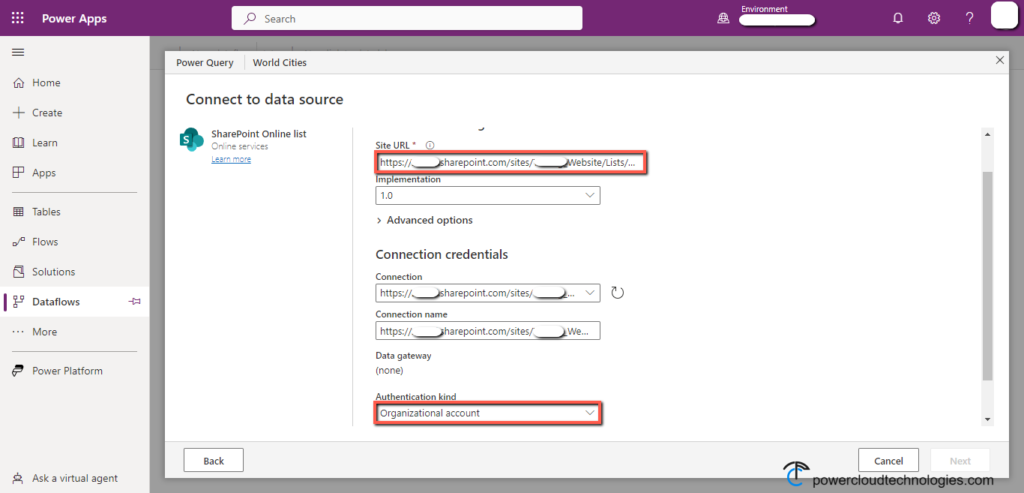
Click on the “Next” button.
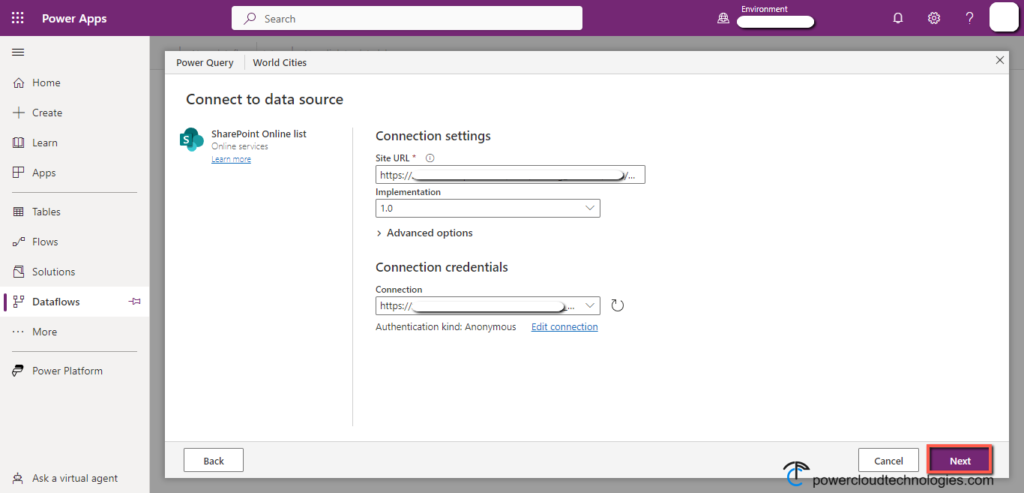
Search and select the “SharePoint Online list”.
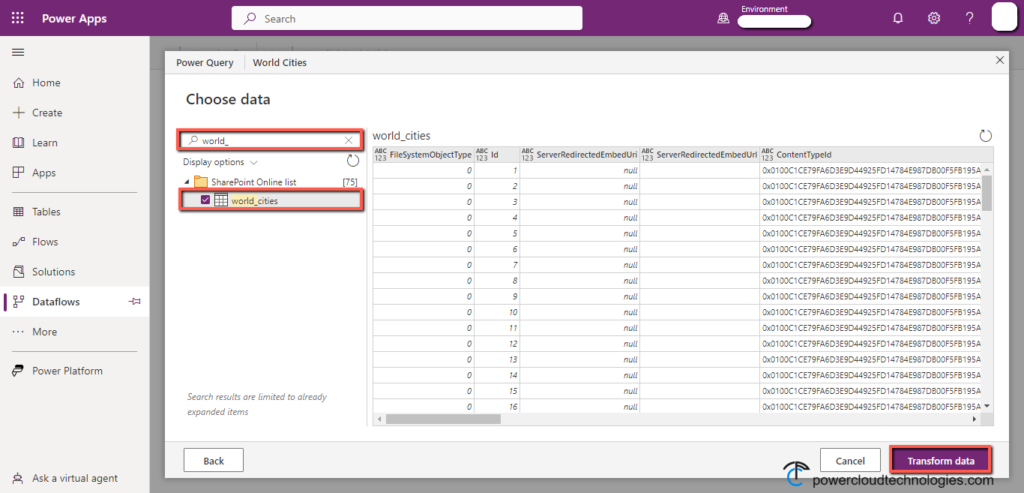
Remove the “ID” column because there is a default “id” column in Power Query, otherwise, you may face a column duplication error.
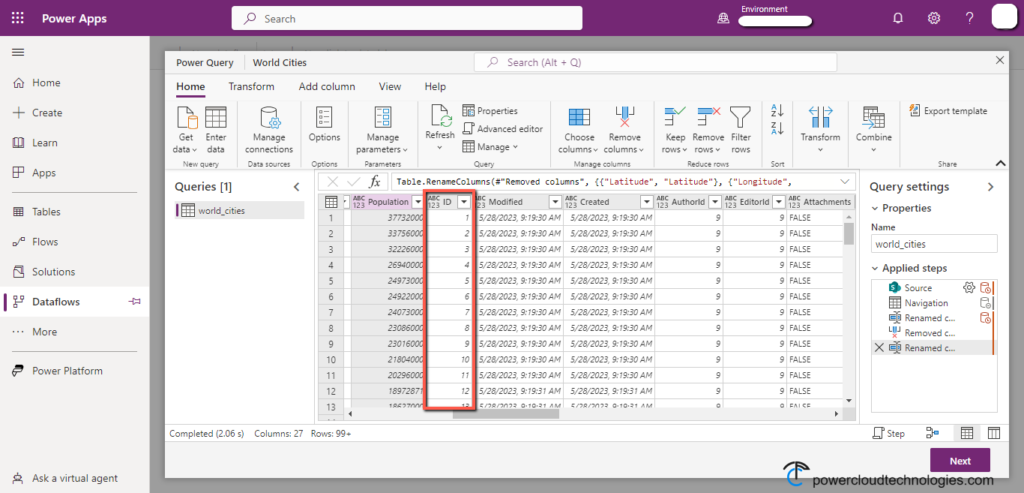
Click on the “Next” button.
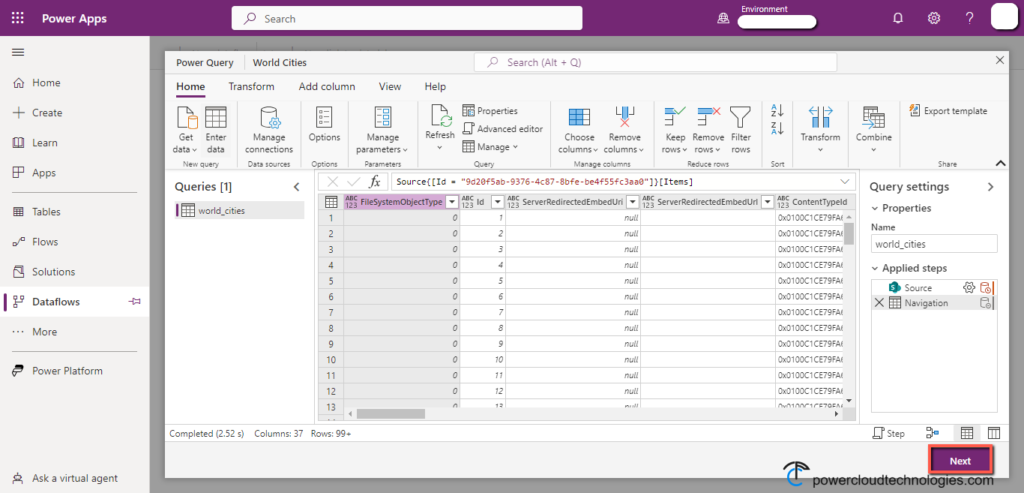
Select the “Load to existing table” option and select the “Destination table”.
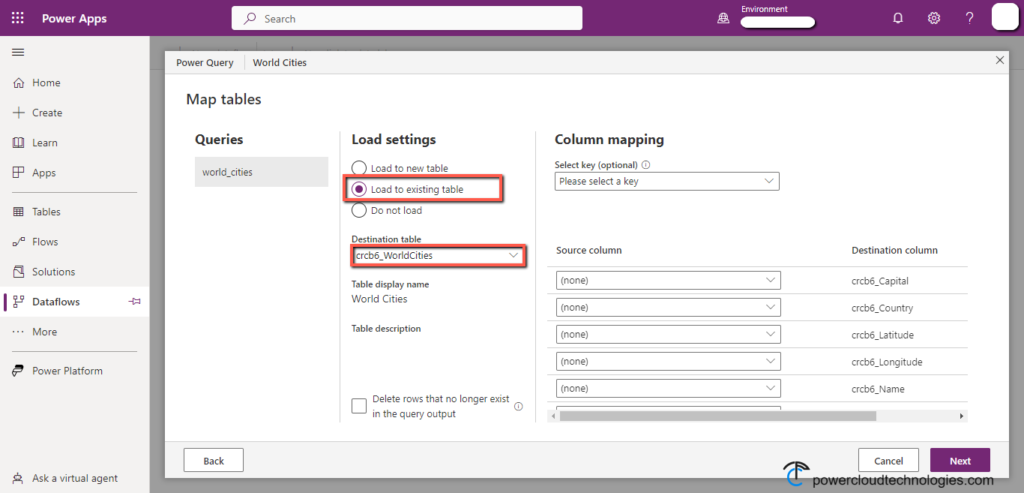
Map the list columns to the respective columns in the table and click on the “Publish” button.
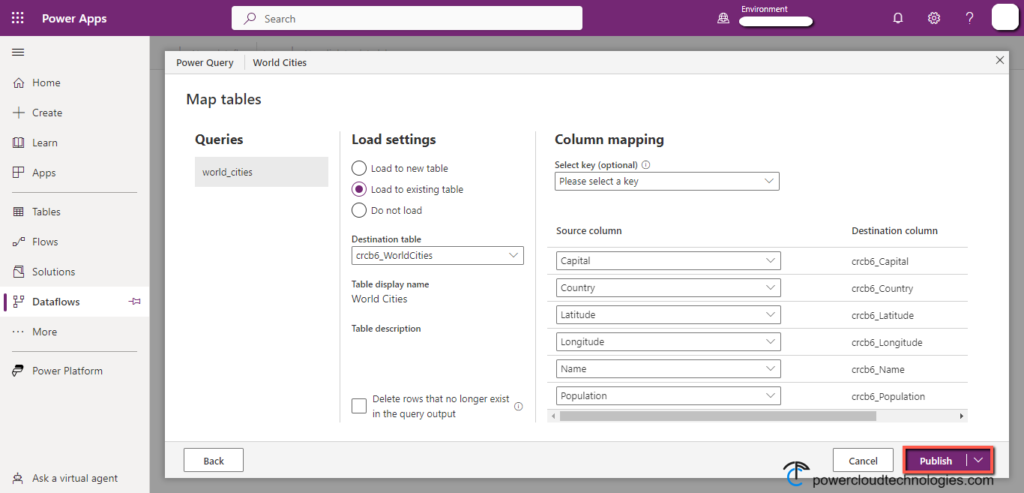
The dataflow is published and is refreshing (uploading the data into the table).
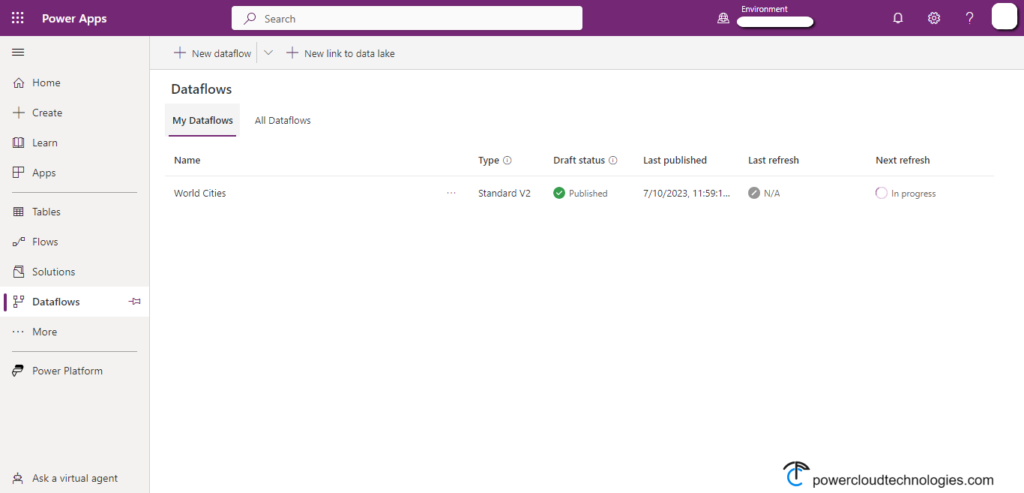
The dataflow is successfully published and refreshed (data is uploaded into the table).
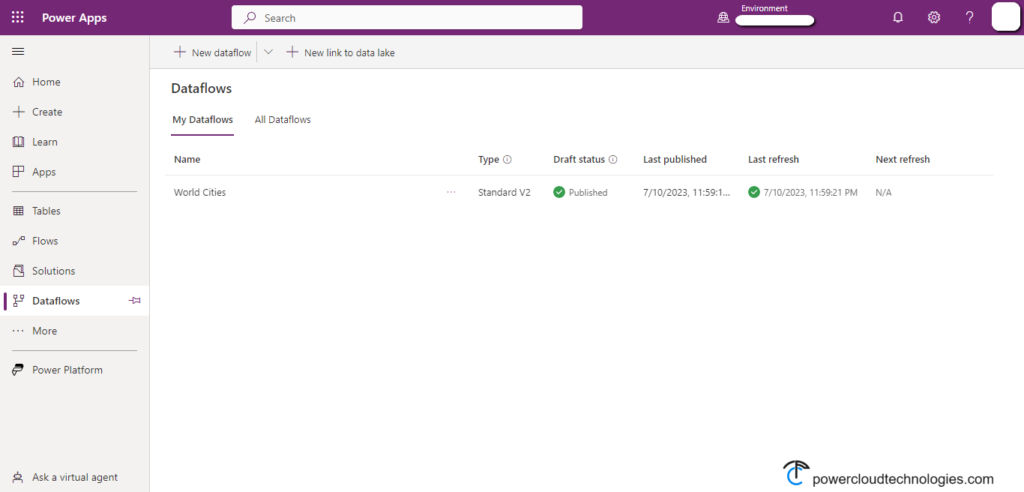
The data is successfully loaded into the Dataverse table.
